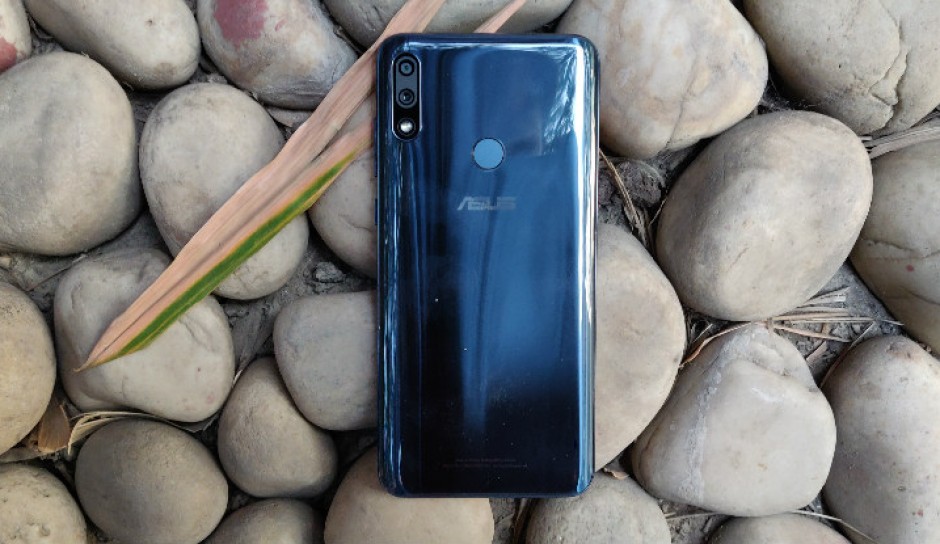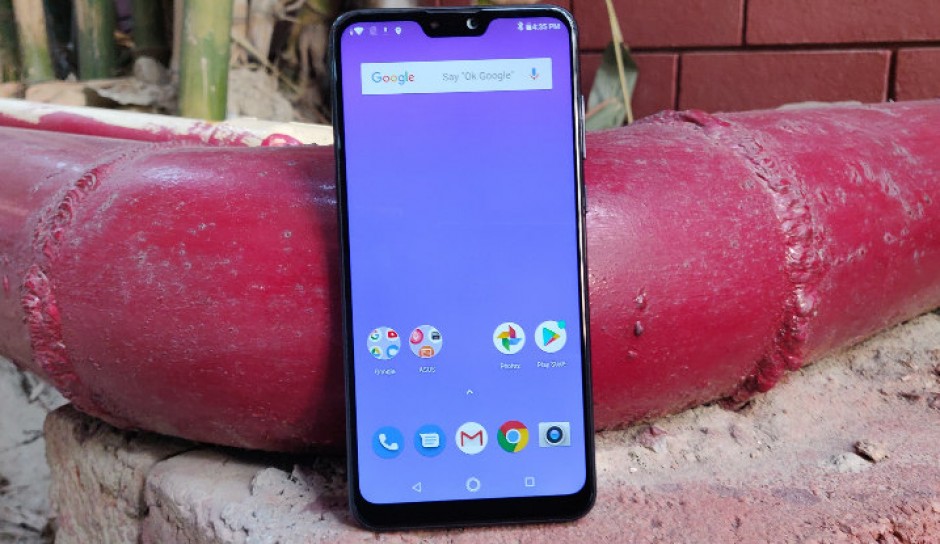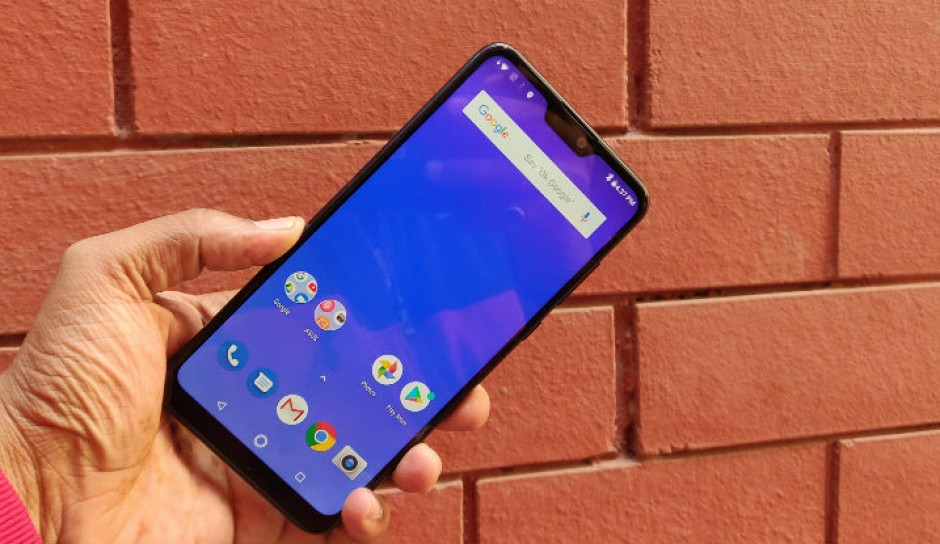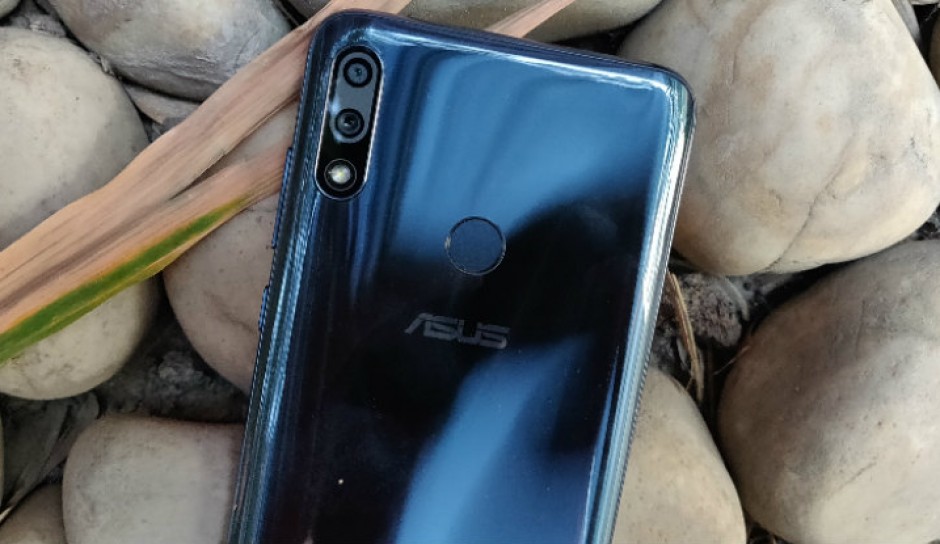Asus has today announced the launch of the latest Asus Zenfone Max Pro M2 in India. The successor to the Max Pro M1 will come with better internals and a flashy glass on the exterior to provide a sense of premium quality to the budget phone. The Asus Zenfone Max Pro M2 comes in three variants – 3GB of RAM with 32GB of internal storage for Rs 12,999, 4GB RAM with 64GB internal storage priced at Rs 14,999, and 6GB RAM with 64GB storage option is priced at Rs 16,999.
For around the same price segment, Xiaomi and Realme offer their Redmi Note 6 Pro and Realme 2 Pro as mid-range competitors to the Zenfone Max Pro M2. Which of these three offer the best package and are easy on the pocket at the same time? Let’s find out.
Design:
Unlike its predecessor, which came with a metal unibody design, the Zenfone Max Pro M2 features a fibreglass body with a glossy finish, giving it a refined new look. The finish on the Max Pro M2 is similar to the one on Realme 2 Pro, which is less on the glossy side but more of a solid colour all around. The lack of metal means, the Zenfone device and the Realme 2 Pro are lighter on the hand and offer a sense of premium feel. The Max Pro M2 is available in Blue and Titanium colours while the Realme 2 Pro can be purchased in Ice Lake, Blue Ocean and Black Sea colour options.

The Redmi Note 6 Pro looks a lot like any Xiaomi phone released in the past year and is about as mainstream as the Redmi Note 5 Pro with a unibody metallic back and plastic Antenna strips at the top and bottom. There’s still the same white coloured bezels on the front on a non-black model which beats the display’s purpose wholly. The Xiaomi phones downside comes mostly from its metallic exterior which at this time of 2018 looks outlandish and outdated.
Winner: Asus Zenfone Max Pro M2
Display:

All three smartphones feature similarly sized (6.26 to 6.3-inch) Full HD+ displays with the Asus and Xiaomi devices sporting equally tall 19:9 aspect ratio and 1080 x 2280 pixels resolution. The Realme 2 Pro is slightly taller with an aspect ratio of 19.5:9 and also offers the largest screen real estate with a screen-to-body ratio of 84 percent. However, it’s Zenfone Max Pro M2 which steals the win as it’s the only display feating a Corning Gorilla Glass 6 protection, meaning it offers better resistance against drops than the other two.
Winner: Asus Zenfone Max Pro M2
Hardware:
The Redmi Note 6 Pro is powered by Qualcomm Snapdragon 636 Processor along with Adreno 509 GPU, 4/6GB of RAM, and 64GB of internal storage which can be further expanded using microSD card. Day-to-day functions are managed smoothly but its no different on paper to its predecessor, the Note 5 Pro.
The Realme 2 Pro and Zenfone Max Pro M2 are real game-changers for the price segment as they bring the more efficient and powerful Snapdragon 660 processor along with Adreno 512 GPU. All three devices come in 4GB and 6GB RAM variants but the Realme device can also be bought with 8GB of RAM and 128GB of internal storage. The Zenfone device also offers added benefits like expandable memory support to up to 512GB.
Winner: Both Realme 2 Pro and Asus Zenfone Max Pro M2
Software:
Both ColorOS and MIUI on the Realme and Redmi device offer a ton of customisation but also weighs down the system several folds than an Android One device would. Both the phones feature heavy skins over Android and often hamper day-to-day usage which gets laggier as the devices age.

While the Zenfone Max Pro M2 isn’t exactly an Android One phone, it offers a close to a pure Android experience. In our time with the review unit, the user interface worked smoothly with very few bloatware, delivering an Android One-like experience.
Winner: Asus Zenfone Max Pro M2
Camera:
On the camera front, the Zenfone Max Pro M2 is equipped with a dual-camera setup. The primary lens with a 12-megapixel Sony IM486 sensor with f/1.8 aperture, 27mm focal length, 6 element lens, phase Autofocus and LED flash coupled with a 5-megapixel secondary shooter with 84-degree Field of view. For the front, there is a 13-megapixel shooter with f/2.0 aperture, 26mm focal length, LED flash and face unlock. The camera UI comes with various modes including Auto, Pro, HDR, Sports and Night and supported video recording to up to 4K at 30fps.

Realme 2 Pro features a dual-camera setup at the back, which comes with a combination of 16-megapixel primary sensor with ½.8-inch Sony IMX398 sensor with f/1.7 Aperture and 1.12-micron pixel size, while the second sensor is used to create a bokeh effect. For the front, the company has employed 16-megapixel shooter for selfies and video calling. Photos from the Realme 2 Pro came out as nicely sharp with plenty of resolved detail, excellent contrast, and accurate colours with the best-in-class performance on a smartphone camera when considering low-light photography.
Redmi Note 6 Pro features a 12-megapixel primary lens with f/2.2 aperture and a 5-megapixel secondary sensor. It supports AI scene detection ( 32 modes), bokeh ( portrait mode) and night scene. It comes loaded with EIS and HDR which can take a 1080p, 720p, and 4800p videos at 30fps. Aside from that, it is also capable of recording 720p slow-mo at 120fps. For selfies, the device provides a 20MP + 2MP dual front camera setup for decent picture quality and controlled bokeh effect. In our testing, the device clicked good pictures with the only complaint being lack of focus in certain conditions.
Winner: Redmi Note 6 Pro
Battery:
While none of the three devices offer Fast charging support, the Realme 2 Pro is backed by the smallest battery of all three with a 3500mAh power unit. The Note 6 Pro edges past a 4,000mAh battery but the Zenfone Max Pro M2 sales the deal with a massive 5,000mAh capacity that can stay up for at least two days of moderate use.
Winner:Zenfone Max Pro M2
Verdict:
| Asus Zenfone Max Pro M2 | Redmi Note 6 Pro | Realme 2 Pro | |
| Processor | Snapdragon 660 | Snapdragon 636 | Snapdragon 660 |
| Display | 6.3-inch Full HD+, 1080 x 2280 pixels | 6.26-inch FHD+, 1080 x 2280 pixels | 6.3-inch Full HD+, 2340 x 1080 pixels |
| Memory | 3GB/4GB/6GB RAM, 32GB/64GB storage | 4GB/6GB RAM, 64GB storage | 4/6/8GB RAM, 64/128GB storage |
| Camera | Rear: 12MP (f/1.8, 1/2.9″, 1.25μm, PDAF) + 5MP (f/2.4, 1.12µm); Front: 13MP, f/2.0, 1.12µm | Rear: 12MP (f/1.9, 1/2.55″, 1.4µm, dual pixel PDAF) + 5MP (f/2.2, 1.12µm); Front: 20MP (f/2.0, 0.9µm) + 2MP (f/2.2, 1.75µm) | Rear: 16MP (f/1.7, 1/2.8″, 1.12µm, PDAF) + 2MP, Front: 16MP (f/2.0) |
| Battery | 5,000mAh | 4,000mAh | 3,500mAh |
| OS | Android 8.1 Oreo | Android 8.1 Oreo, MIUI 10 | Android 8.1 (Oreo), Color OS 5.2 |
| Price | Rs 12,999, Rs 14,999, Rs 16,999 | Rs 13,999, Rs 15,999 | Rs 13,990, Rs 15,990, Rs 17,990 |
The Asus Zenfone Max Pro M2 is a game changer, not just on paper but also in terms of pricing. It packs in the same Snapdragon 660 chipset and a fibre-glass design as found on the Realme 2 Pro but is offered at a Rs 1,000 cheaper price than the latter. Add to that a decent set of imaging equipment, the largest battery unit, near-to-stock Android and the latest Corning Gorilla Glass 6 protection on the front for drop-resistance. The Zenfone Max Pro M2 ticks all the boxes if you’re in the market for an all-around smartphone and it’s safe to say that Asus has beaten Xiaomi in their own game and the Realme 2 Pro is a close second.

